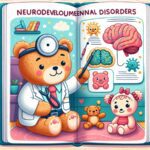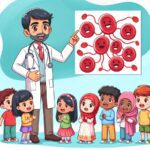Y-linked disorders are genetic conditions passed down through the Y chromosome, which typically affects males. Understanding these conditions is crucial for new parents, especially if they are raising boys. This article aims to explore what Y-linked disorders are, how they are diagnosed, and what treatments are available.
What are Y-Linked Disorders?
Y-linked disorders, also known as holandric disorders, are genetic conditions that are only passed from fathers to their sons through the Y chromosome. Since females do not carry a Y chromosome, they cannot inherit or pass on these conditions. Some of the most common Y-linked disorders include Y chromosome infertility, Swyer syndrome, and certain types of dwarfism.
These disorders can have varying impacts on health, from minor to severe. Unlike other genetic conditions that require a combination of genes from both parents, Y-linked disorders are directly passed from father to son. This unique inheritance pattern simplifies tracking and managing these conditions within families.
How are Y-Linked Disorders Diagnosed?
Diagnosing Y-linked disorders usually involves genetic testing and a detailed family history analysis. If a disorder is suspected, genetic counseling is recommended to assess the risk and discuss potential tests. These tests can confirm the presence of specific genetic mutations associated with Y-linked disorders.
It’s essential for parents to understand that early diagnosis can greatly impact the management and treatment of these conditions. In some cases, early intervention can significantly improve quality of life and reduce the severity of symptoms.
Treatment and Management of Y-Linked Disorders
Treatment for Y-linked disorders varies depending on the specific condition and its severity. In general, management may include regular monitoring, medication, surgery, or genetic counseling for future family planning. For many Y-linked disorders, supportive care and symptom management are the primary treatment strategies.
For families affected by Y-linked disorders, connecting with support groups and resources can be invaluable. These communities provide support, share experiences, and offer advice on navigating the challenges of living with genetic conditions.
Living with a Y-Linked Disorder
Living with a Y-linked disorder can be challenging for both the individual and their family. However, with the right support and treatment, individuals can lead fulfilling lives. Education about the condition, open communication with healthcare providers, and connecting with a supportive community are crucial steps for managing life with a Y-linked disorder.
For new parents, discovering that their child has a Y-linked disorder may feel overwhelming. However, it’s important to remember that you are not alone. Many resources and support systems are available to help you navigate this journey. Engaging with these resources can provide the information, support, and community needed to manage the condition effectively.
Conclusion
Y-linked disorders, while rare, present unique challenges and considerations for affected families. Understanding these conditions, their inheritance patterns, and available treatments allows for better management and support. With advances in genetic testing and a growing network of resources, families can navigate the complexities of Y-linked disorders more effectively than ever before.
Parents who are concerned about Y-linked disorders should consult with genetic counselors and healthcare providers for personalized advice and support. Remember, knowledge is power, and taking proactive steps can make a significant difference in managing these conditions.
For more information on related topics, please visit our internal links:













